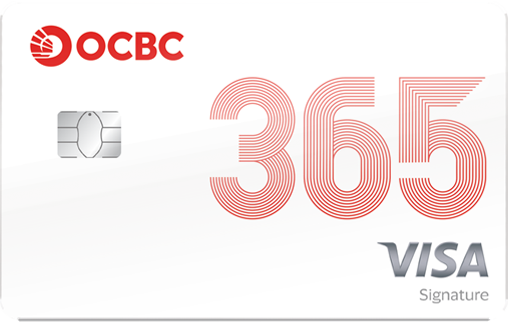We need 2 to 3 weeks to process the new loan for the remaining owner after receiving all the documents.
What happens to your loan when there is a change in property ownership
How your loan is affected when
Find out about the process and costs.
Consult your lawyer
Get advice from your lawyer on the following processes:
- Transfer of share, through selling of property share to the remaining owner*
- What you need to do if you have used CPF funds to pay for the property
Get advice from your lawyer on the following processes:
- Transfer of share, through selling of property share to the remaining owner*
- What you need to do if you have used CPF funds to pay for the property
Consider the costs
There are other costs that you may incur, such as:
- Stamp duty on the sale of your share of the property
- Legal fee for the sale of your property
- Legal fee for conveyancing work on the new loan for the remaining owner
- Valuation fee for the property
- Prepayment fee (if any) and other penalties on the existing loan on the property
There are other costs that you may incur, such as:
- Stamp duty on the sale of your share of the property
- Legal fee for the sale of your property
- Legal fee for conveyancing work on the new loan for the remaining owner
- Valuation fee for the property
- Prepayment fee (if any) and other penalties on the existing loan on the property
Understand the changes to your loan.
Closure of loan account
The existing loan account will be closed as the loan cannot continue with a change in owner and borrower.
Fees involved in closing the account may include:
- Prepayment penalty if the loan is still within the ‘lock-in’ period
- Cancellation fee on undisbursed loan amount
- Fee for not redeeming the loan on rate review date (for SIBOR and foreign currency loans)
The existing loan account will be closed as the loan cannot continue with a change in owner and borrower.
Fees involved in closing the account may include:
- Prepayment penalty if the loan is still within the ‘lock-in’ period
- Cancellation fee on undisbursed loan amount
- Fee for not redeeming the loan on rate review date (for SIBOR and foreign currency loans)
Higher loan amount
The new loan amount for the remaining owner will be a higher amount as he/she will be taking over the former owner’s portion.
The new loan amount will consist of 2 parts:
- The remaining owner’s portion of the loan
- The additional amount that can be loaned after taking over the former owner’s share, subject to the applicable loan-to-value ratio
The new loan amount for the remaining owner will be a higher amount as he/she will be taking over the former owner’s portion.
The new loan amount will consist of 2 parts:
- The remaining owner’s portion of the loan
- The additional amount that can be loaned after taking over the former owner’s share, subject to the applicable loan-to-value ratio
Here is an illustration of the new loan amount for the remaining owner when the former owner sells his/her share.
The calculations are based on the property having 2 owners.
Outstanding loan amount for both owners
S$400,000
Outstanding loan amount for the remaining owner
S$200,000
Current market value of the property
S$1,000,000
Purchase price for the former owner's share of the property
50%
Based on the former owner’s share of the property
S$1,000,000
Current market value of the property
S$500,000
Current market value of the former owner's share of the property
Additional loan amount to purchase the former owner's share of the property
75%
Maximum loan-to-value ratio if remaining owner does not have other home loans in Singapore
The remaining owner will have to pay the remaining 25% (5% in cash and 20% in cash or CPF)
S$500,000
Current market value of the former owner's share of the property
S$375,000
Maximum additional loan
New loan amount for the remaining owner
S$200,000
Outstanding loan amount for the remaining owner
S$375,000
Additional loan amount to purchase the share of the property
S$575,000
New loan amount
Submit the following documents to us via email.
|
|
Accept our letter of offer so documentation can proceed.
1
Please review and accept our letter of offer for the new loan once all the documents are submitted.
2
A lawyer on the bank's panel will handle legal documentation and assist you with updates to the CPF Board.
3
The valuer will contact you regarding a site inspection of your property.
Fire insurance, if any, will be updated to reflect the change in property ownership.
4
The lawyer will inform us to disburse the new loan once the documentation is complete.
Service your new loan account.
1
A new loan account will be opened and your previous loan account will be closed.
2
Start making instalment payments based on the information we have given you.
3
Update your payment details with CPF if you are utilising CPF funds to make monthly instalment payments.
Find out about the process and costs.
Consult your lawyer
Get advice from your lawyer on the following processes:
- Obtaining the Grant of Probate or Letter of Administration
- Transfer of property share to the beneficiary
- What to do if the deceased used CPF funds to pay for the property
Get advice from your lawyer on the following processes:
- Obtaining the Grant of Probate or Letter of Administration
- Transfer of property share to the beneficiary
- What to do if the deceased used CPF funds to pay for the property
Consider the costs
There are other costs that you may incur, such as:
- Legal fee for conveyancing work on the new loan
- Valuation fee for the property
- Prepayment fee (if any) and other penalties on the existing loan on the property
There are other costs that you may incur, such as:
- Legal fee for conveyancing work on the new loan
- Valuation fee for the property
- Prepayment fee (if any) and other penalties on the existing loan on the property
Understand the changes to your loan.
Closure of loan account (For Tenancy In Common)
- If the property is held under Tenancy in Common, the deceased owner’s share will go to the beneficiary and the existing loan account will be closed
- The beneficiary can apply for a new loan account with the surviving owner if he/she is at least 21 years old
- If the property is held under Tenancy in Common, the deceased owner’s share will go to the beneficiary and the existing loan account will be closed
- The beneficiary can apply for a new loan account with the surviving owner if he/she is at least 21 years old
Maintain existing loan amount
- If the property is held under Joint Tenancy, the deceased owner’s share of the property will go to the surviving owner.
- The surviving owner can continue to be the borrower and maintain the existing loan account.
- If the property is held under Joint Tenancy, the deceased owner’s share of the property will go to the surviving owner.
- The surviving owner can continue to be the borrower and maintain the existing loan account.
Here are two illustrations of how the property loan may change when one owner (B) passes away.
Tenancy In Common: The deceased owner's share of the property is distributed to the beneficiary
Loan amount:
S$200,000
Owners: A + B
Borrowers: A + B
B’s share is distributed to C
The new loan amount will depend on regulations on the loan amount, loan tenure, total debt servicing ratio and OCBC's guidelines.
Owners: A + C
Borrowers: A + C
Joint Tenancy: The deceased owner's share of the property is transferred to the surviving owner
Loan amount:
S$200,000
Owners: A + B
Borrowers: A + B
Loan amount: S$200,000
Owner: A
Borrower: A
Submit the following documents to us via email. (For Tenancy In Common)
|
|
Accept our letter of offer so documentation can proceed.
(For Tenancy In Common)
(For Tenancy In Common)
1
Please review and accept our letter of offer for the new loan once all the documents are submitted.
2
A lawyer on the bank's panel will handle legal documentation and assist you with updates to the CPF Board.
3
The valuer will contact you regarding a site inspection of your property.
Fire insurance, if any, will be updated to reflect the change in property ownership.
4
The lawyer will inform us to disburse the new loan once the documentation is complete.
Service your new loan account.
(For Tenancy In Common)
1
A new loan account will be opened and your previous loan account will be closed.
2
Start making instalment payments based on the information we have given you.
3
Update your payment details with CPF if you are utilising CPF funds to make monthly instalment payments.
Find out about the process and costs.
Consult your lawyer
Get advice from your lawyer on the following processes:
- Transfer of property in the event of divorce
- Obtaining Court Order / Syariah Court Order and Final Judgement
- What you need to do if CPF funds were used to pay for the property
Get advice from your lawyer on the following processes:
- Transfer of property in the event of divorce
- Obtaining Court Order / Syariah Court Order and Final Judgement
- What you need to do if CPF funds were used to pay for the property
Consider the costs
There are other costs that you may incur, such as:
- Legal fee for conveyancing work on the new loan
- Valuation fee for the property
- Prepayment fee (if any) and other penalties on the existing loan on the property
There are other costs that you may incur, such as:
- Legal fee for conveyancing work on the new loan
- Valuation fee for the property
- Prepayment fee (if any) and other penalties on the existing loan on the property
Understand the changes to your loan.
Closure of loan account
The existing loan account will be closed as the loan cannot continue with a change in owner and borrower.
Fees in involved in closing the account may include:
- Prepayment penalty if the loan is still within the ‘lock-in’ period
- Cancellation fee on undisbursed loan amount
- Fee for not redeeming the loan on rate review date (for SIBOR and foreign currency loans)
The existing loan account will be closed as the loan cannot continue with a change in owner and borrower.
Fees in involved in closing the account may include:
- Prepayment penalty if the loan is still within the ‘lock-in’ period
- Cancellation fee on undisbursed loan amount
- Fee for not redeeming the loan on rate review date (for SIBOR and foreign currency loans)
Higher loan amount
The new loan amount for the remaining owner will be a higher amount as he/she will be taking over the former spouse’s portion.
The new loan amount will consist of 2 parts:
- The outstanding loan amount
- An additional amount to refund any CPF funds used by the former spouse to pay for the property
The new loan amount for the remaining owner will be a higher amount as he/she will be taking over the former spouse’s portion.
The new loan amount will consist of 2 parts:
- The outstanding loan amount
- An additional amount to refund any CPF funds used by the former spouse to pay for the property
Here is an illustration of the new loan amount when the property share is transferred to the remaining owner.
The calculations are based on taking over the former spouse’s 50% share of the property.
Outstanding loan amount for both owners
S$400,000
CPF funds used by the former spouse
S$200,000
Current market value of the property
S$1,000,000
New loan amount for the remaining owner
S$400,000
Outstanding loan amount for the remaining owner
S$200,000
Additional loan amount to refund CPF funds used
S$600,000
The loan amount is subject to the loan-to-value ratio not exceeding 80% and other guidelines.
If the additional loan is not sufficient to refund the CPF funds used by the former spouse, the remaining owner must refund the balance in cash.
Submit the following documents to us via email.
Accept our letter of offer so documentation can proceed.
1
Please review and accept our letter of offer for the new loan once all the documents are submitted.
2
A lawyer on the bank's panel will handle legal documentation and assist you with updates to the CPF Board.
3
The valuer will contact you regarding a site inspection of your property.
Fire insurance, if any, will be updated to reflect the change in property ownership.
4
The lawyer will inform us to disburse the new loan once the documentation is complete.
Service your new loan account.
1
A new loan account will be opened and your previous loan account will be closed.
2
Start making instalment payments based on the information we have given you.
3
Update your payment details with CPF if you are utilising CPF funds to make monthly instalment payments.
Contact us for your change in property ownership.
when you are ready with the necessary documents.
Common questions
Penalties and fees generally include
- Prepayment penalty if the loan is still within the ‘lock-in’ period
- Cancellation fee on undisbursed loan amount
- Fee for not redeeming the loan on rate review date (for SIBOR and foreign currency loans)
Please refer to your Letter of Offer for more details.
It will follow prevailing interest rates as published on ocbc.com/homeloans
The additional loan will be disbursed to pay off the former owner’s share of the loan and to refund any CPF funds used to pay for the property. Any remainder will be received in cash.
Common questions
We need 2 to 3 weeks to process the new loan when the deceased’s property share is distributed to a beneficiary.
Penalties and fees generally include
- Prepayment penalty if the loan is still within the ‘lock-in’ period
- Cancellation fee on undisbursed loan amount
- Fee for not redeeming the loan on rate review date (for SIBOR and foreign currency loans)
Please refer to your Letter of Offer for more details.
It will follow prevailing interest rates as published on ocbc.com/homeloans
In the event that an owner passes away and the beneficiary wants to be a joint borrower with the surviving owner/borrower, OCBC will assess this as a new loan.
The new loan amount will depend on regulations on loan amount, loan tenure, total debt servicing ratio and OCBC’s guidelines. We are unable to provide financing if the property share is transferred as a gift, or if the property is held under a trust.
Common questions
We need 2 to 3 weeks to process the new loan for the remaining owner after receiving all the documents.
Penalties and fees generally include
- Prepayment penalty if the loan is still within the ‘lock-in’ period
- Cancellation fee on undisbursed loan amount
- Fee for not redeeming the loan on rate review date (for SIBOR and foreign currency loans)
Please refer to your Letter of Offer for more details.
It will follow prevailing interest rates as published on ocbc.com/homeloans
The new loan amount depends on OCBC’s assessment of affordability, maximum loan-to-value ratio of 80% (total loan amount cannot exceed 80% of the property’s current market value) and other assessment criteria. If the additional loan is not sufficient to refund the CPF funds used by your former spouse, you will have to refund the balance in cash.
 Income documents
Income documents
Self-employed/ Commission earner
- Latest Notice of Assessment
Salaried employees
- Latest yearly Notice of Assessment
- Latest 3 months’ pay slips
- Latest 12 months’ CPF Contribution statement
Overseas employees
- Latest 3 months’ pay slips or Letter of Employment
- 3 months’ corresponding bank statements reflecting crediting of salary
 CPF Balance Statements
CPF Balance Statements
- Log in to the CPF website at www.cpf.gov.sg
- Go to ‘My Statement’ under Section A and save as PDF
 CPF Property Withdrawal Statement (for all owners of the property)
CPF Property Withdrawal Statement (for all owners of the property)
- Log in to the CPF website using your Singpass account at www.cpf.gov.sg
- Go to ‘My Statement’ on the left panel
- Scroll down to Section C and click on ‘Property’
- Click on 'My Public/Private Properties Withdrawal Details' and save this statement as a PDF. The document must show your name, property address, total CPF amount used and the date
 HDB Financial Information document
HDB Financial Information document
- Go to the HDB website at www.hdb.gov.sg
- Log in using your Singpass account at ‘My HDBPage’
- Click on 'My Flat' and then 'Financial Info' under the Purchased Flat section on the panel. Save this page as PDF
 HDB flat details document
HDB flat details document
- Go to the HDB website at www.hdb.gov.sg
- Log in using your Singpass account at ‘My HDBPage’
- Click on 'My Flat' and then 'Flat Details' under the Purchased Flat section on the panel. Save this page as PDF








